As I sit through my rounds of chemo and wait for a needle-in-a-haystack live-saving stem cell donor to be found, I’ve decided that this is the time to get serious about my Buddhist practice. Over on Medium, I write in more depth about how I draw on my Buddhist practice to address my battle with cancer.
Author: arun
We’ve Been Here All Along
There’s a lot in Funie Hsu’s article on the Lion’s Roar website that strikes a chord with me. Even the title resonates with a point I find I’m compelled to make, again and again, that not only am I an American Buddhist, at least four generations of my family have been practicing Buddhism in America in uniquely American ways. But is that how white Buddhists talk about us and American Buddhism? Hsu writes…
Indeed, Asian and Asian-American Buddhist practices have often been dismissed as superstitious, inauthentic (yet authentically exotic!) forms of Buddhism. In mainstream white American Buddhist conversations, white Buddhists are often heralded as the erudite saviors and purifiers of Buddhism. This perspective exemplifies the subtle enactments and overwhelming hubris of white supremacy. In positioning a certain type of Buddhism (white) as better than other kinds of Buddhism (Asian, “folk,” “baggage Buddhism”), the white ownership of Buddhism is claimed through delegitimizing the validity and long history of our traditions, then appropriating the practices on the pretext of performing them more correctly.
The issues discussed in this piece are controversial in our current political climate. But Buddhist America is not immune to the very racial stereotypes and divisions that run rampant in America in general. If we cannot address these issues in our own Buddhist communities, how can we think we can address them in broader American society and throughout the world?
The full piece is available online at Lion’s Roar.
We’re Not Who You Think We Are
There is so much to say and share about this piece on the Lion’s Roarwebsite. These thoughts by author Chenxing Han resonated with me particularly.
It saddens me that many Asian Americans—myself included—are reluctant to “come out” as Buddhist. Sometimes this reluctance arises from a fear of being discriminated against or stereotyped. Sometimes it comes from a sense of inadequacy and inauthenticity when comparing ourselves to the white Buddhists who seem to be doing most of the defining in American Buddhism. Yet I am also reassured by a reminder from Alyssa, an interviewee whose Buddhist journey has taken her from a college meditation group on the East Coast to a Buddhist nunnery in China to various sanghas in her native Bay Area: even if they aren’t a trending topic on social media, Asian American Buddhists are everywhere.
You can read the full piece here.
Learning to Know and Control My Self
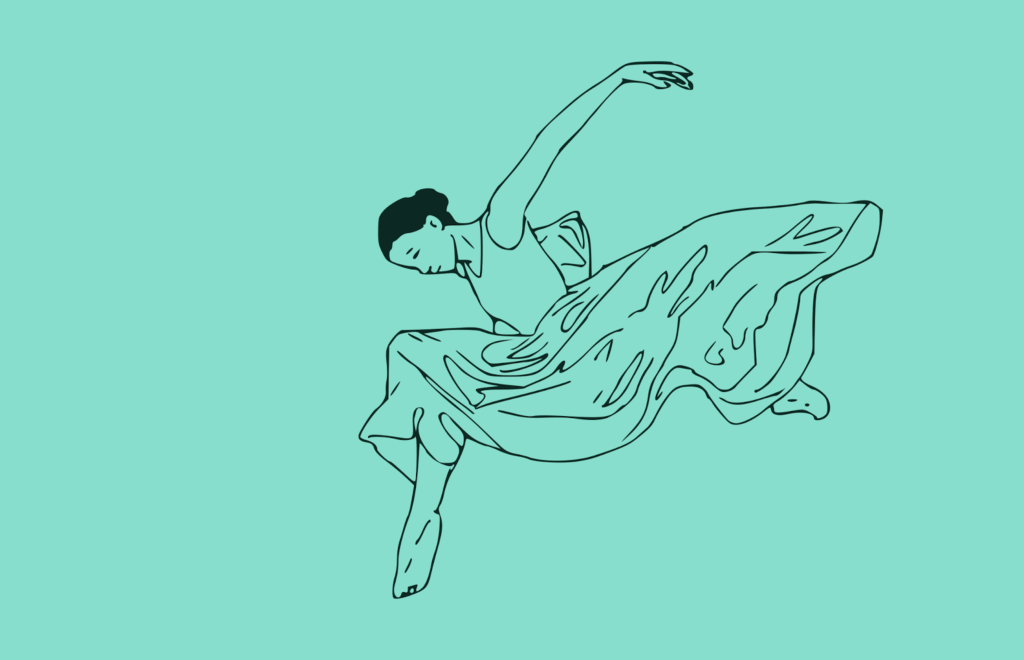
This heartfelt piece is by a friend who is a dancer, health care professional, community organizer, rights activist and writer with whom I coauthored a letter to Buddhadharma. She frequently comments as Liriel.
I started dance late. I was nearly 13 years old and definitely not Misty Copeland. I had rhythm but not a particularly good pointe. I had flexibility but not particularly good balance. I still can’t do a back walkover to save my life. But I had a dance teacher who taught me to know my self, to care for my community, to understand my limitations, but not to quit until I’ve tested them, to love the dance, and to let it go.
I have so many memories of 羅老師. When she allowed me to perform so soon after my promotion to the advanced class that I didn’t know all the steps to the Ami dance. (She wasn’t worried about me embarrassing her; I showed up, so I was going on.) When she hired a Laker girl to teach us a very different style of dance. (She loved all types of dance and wanted us to have as broad an education as possible.) When she choreographed the perfect commencement dance for me upon my graduation from high school. (She then gifted that choreography to me – just in case I ever need it.) But the memory that returns to me most often is one of a fairly unremarkable class on a Sunday morning.
We had spent the class on the basics, focusing on form, doing across the floor exercises for the majority of the time. And I had had difficulty keeping up. My weight was balanced wrong; my fingers, droopy; my turnout, nonexistent. This last defect had 羅老師 coming up to me when I was in passé, taking hold of my leg, and guiding it to the left as I protested that I couldn’t move that way.
“See? You can move that way. You just weren’t trying.”
After class, as we were changing our shoes, 羅老師 came to talk to me.
“Prajña, dance is the art of knowing and controlling your own body. It might sound stupid. You might think, ‘I know how to control my body, I use it everyday;’ but it’s actually very hard. Most people cannot. But in this class, you need to try.”
This was the quiet, understated wisdom of 羅老師. As a full-time county welfare worker, a Saturday Chinese school principal, and a Sunday dance teacher. Dance never paid the bills for her, and she knew that none of us would ever go on to dance professionally. But she understood each of us and what we could learn from her dance class to carry with us through the storms of adolescence into the uncharted waters of adulthood.
I never thanked her for this, and now it’s too late. 羅老師 passed away last Friday, and I am grieving. But in my heart, 羅老師 left a handful of mustard seeds: “Prajña, dance is the art of knowing and controlling your own body.”
Mindfulness is the practice of knowing and controlling my own mind. But meditation has always been difficult for me. I always feel like a fraud. I always feel so alone. But today I will sit with the memory of 羅老師, tomorrow I will dance in her honor, and I will not be alone, and I will not be a fraud. Because it is hard, and I am trying.
Thank Yous
A little over a year ago, Funie Hsu of the Buddhist Peace Fellowship interviewed me in Turning Wheel Media. The BPF team was kind enough to go through the painstaking effort of transcribing the interview with an incredible faithfulness to my awkward style of speaking and incoherent ramblings.
Given the span of time since my last post, I felt it appropriate to share some thoughts from that interview.
There’s a lot that I want to write about, talk about, explore, as an Asian American Buddhist and otherwise. But, over time, as I realize a lot of people are looking at what I say, I’m really not completely at ease with writing. Because it strikes me that whatever I say, a lot of people are going to misinterpret it. So I feel a lot of pressure to write clearly. Which is always an important quality. You should always write clearly. You should never degrade that. But because there’s more pressure, oftentimes we just don’t write.
There’s a story I love, about a bunch of Thai American Buddhists who pulled together to save their temple, Wat Mongkolratanaram in Berkeley, CA. The neighborhood of mostly non-Thai residents tried to get their temple food court shut down, and that would’ve cut off a major stream of revenue for the temple. But a bunch of young Thai American Buddhists banded together. I remember reading about it in the Wall Street Journal – and there was this WSJ video of them. One of the organizers, Pahole Sookkasikon, won Hyphen Magazine’s Mr. Hyphen award in 2009. That was a really cool story – I wish that was in Tricycle Magazine or Shambhala Sun. That’s a really cool thing that young Buddhists did, getting together to save their parents’ temple – saving their temple, their community’s temple. When I tried to interview them they were like, “I don’t know if I can talk about this.” They were totally fine with being up in front of the cameras when the temple was on the chopping block, but when it came to talking to other Buddhists about what they did, they were like, “Well, I don’t know.”
And it’s funny because I feel like I’m the same way. When you insult my grandmother, then I’m going to write that flaming internet post. But when it’s like, “I want you to talk about these ideas,”… I don’t know what to talk about, I’m gonna make a fool out of myself… andmy community… and my family. So, it’s a strange dynamic we have.
I never expected this blog to gain so much notoriety. I mean, Charles Prebish even mentioned me in his memoirs! (Okay, I was barely more than a footnote.) All this publicity because I’ve written a few dozen blog posts about the very obvious ways by which white Buddhists in America treat Buddhist Americans of Asian heritage, but are loathe to admit.
Talking about these issues has felt like a very lonely affair, but recently I’ve been getting some refreshing support. There are several Buddhist Asian Americans (and Canadians) I’ve met over the past few years who have transformed my own view of what it means to be both Buddhist and Asian American. Right now I don’t have enough space to thank them all, but I want to give a particular shout out to Chenxing Han, Funie Hsu, Dedunu Sylvia, Susan Yao, Mushim Ikeda Nash and Jo Yuasa. Your writing and your encouragement is what compelled me to write more. You are the reason that I was willing to step back out of a very comfortable silence.
From the bottom of my heart I thank you for being my role model.
Making Our Way without Asians
There is little new to say that I didn’t already say five years ago.

Let me start out, as I normally do, by noting that there are many virtues to the Buddhadharma discussion, “Making Our Way: On Women and Buddhism.” Sandy Boucher, Grace Schireson, Christina Feldman, Lama Palden Drolma and Rita Gross are individuals with considerable experience examining and debating the topic of women and Buddhism. They have wonderful insights to share, many of which I highlighted and jotted down in my notebook. But as you might have guessed, I noticed something missing.
Namely, Asians.
What makes this conversation so dangerous is that it easily leaves readers with the belief that Asian women, be they in Asia or the West, don’t even think about this topic, never mind do anything about it. Several years ago I posted Cheng Wei-Yi’s essay, “Rethinking Western Feminist Critiques on Buddhism,” and one of the comments came from someone with this very impression:
The critique is that we’re not listening to Asian women’s input here; well, then let’s have more of it. What developments towards the equality and dignity of women have taken place in Buddhism, apart from “western” feminist influence?
It is in response to challenges like these that Rev. Patti Usuki wrote Currents of Change: American Buddhist Women Speak Out on Jodo Shinshu. If you read the blog of Rev. Patti Nakai, you can find yet another Asian American Buddhist woman’s thoughts. Or you can read other publications by Cheng Wei-Yi. In a previous letter to Buddhadharma, I included a list of several Asian Buddhist women, including published authors, who could speak to this topic. Not only can you find their thoughts in books and on websites—these women are alive. You can send them email.
I have spent my whole life around Asian Buddhist women in the West. They are the reason I am Buddhist. They have taught me how to bow, how to chant, how to apply Buddhist teachings, how to walk mindfully, how to meditate and delve into deep concentration. These amazing women don’t fit any of the stereotypes of Asian Buddhists. I have known Asian American nuns ordained in the Tibetan, Mahayana and Theravada traditions—women who have had unthinkable struggles, incredible stories and strong opinions on the role of women in Buddhism.
Just imagine how different a conversation you would have if you gathered these women together for a discussion on Buddhist patriarchy. It’s something that’s never before appeared in Buddhadharma or Tricycle. Imagine what it would be like if they wer犀利士 e in the room, so that you couldn’t so easily refer to Asian Buddhists as “them.”
Rev. Taitetsu Unno (1929-2014)
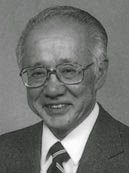
This weekend I received the sad news of the passing of Rev. Taitetsu Unno. I am at a loss of words to describe the great impact that he has had on me and people around me. There are many wonderful stories I’ve heard of him, but before sharing any of them, I encourage you to read a short biography by his son, Rev. Mark Unno.
Rev. Dr. Taitetsu Unno completed his life journey on Saturday, Dec 13, 2014. To the very end, he was fully aware and at peace, saying, “Thank you for everything, Namu Amida Butsu,” and when he could no longer speak, simply putting his palms together in gassho. His family and close friends who came to visit in his last days and hours experienced the deep joy of being with him and chanting together, immersed in the rhythms of boundless compassion. He received the remarkably good fortune, the great gift of the Dharma, of the life of Namu Amida Butsu, which he was able to share with so many.
You can read his full biography here.
Namu Amida Butsu
The Buddha is the New Face of Customer Service
Apparently the Buddha works at a San Francisco customer service start up. At least so it appears when you first see Zendesk’s brand mascot, The Mentor, who is elsewhere more affectionately referred to as “Buddhy.” Ugh.
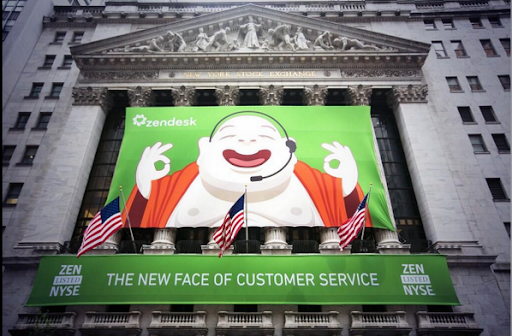
Buddhy is cultural appropriation at its most flagrant. Zendesk has taken Buddhist iconography, particularly that of Budai, and repackaged it as an integral component of their brand asset portfolio. What’s worse is that when you flip through their social media stream, ZenDesk employees repeatedly play on Oriental stereotypes and often put The Mentor in situations that many millions of Asian Buddhists would immediately perceive as blatant disrespect.
Zendesk has been parading their mascot around for years now. I’m amazed I didn’t learn about it until just this past weekend, especially since it seems so many other Buddhists have already been talking about it.
What do you think about Zendesk’s brand asset choice?
HT to Wanwan.
Happy Asian Pacific American Heritage Month!
If I had more time, I would celebrate Asian-Pacific American Heritage Month by writing a post about every Buddhist Asian American who has a great story to share. I would write about issues that affect the lives of Buddhist Asian Americans. I would essentially do all the things that I try to do every day on this blog.
So this year I did something different. I made a collage.
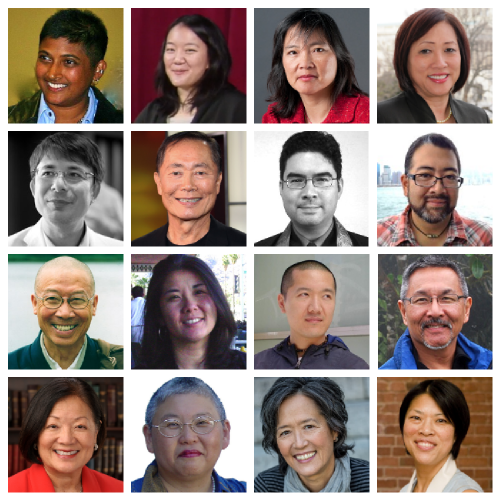
I was surprised. I’d never seen Buddhist Asian Americans presented like this before. Placed together are the portraits of the first 16 Buddhist Asian Americans whose photos I could find with Google image search. Here you have writers, activists, politicians, consultants, professors and Dharma teachers. I could have gone on, but I need to rest before running the Bay to Breakers in a few hours.
In the past, I’ve caused a stir by making the exact same type of collage with photos of Buddhist Geeks conference speakers, the editors of Shambhala Sun and the contributors to a magazine feature on women in Buddhism. Those collages demonstrate how American Buddhism’s Asian majority are repeatedly marginalized from prominent discussions about Buddhism.
This image reminds me that there’s still so much more to write about Buddhist Asian Americans. The portraits remind me that we cannot be described by the coarse stereotypes of Oriental monks, superstitious immigrants or banana Buddhists. We have incredible stories to share with you—if only one takes the care to look for them.
Stereotypology of Asian American Buddhists
Buddhist Asian Americans are often surprised to encounter so many stereotypes about us. For all the claims we mostly keep to ourselves in “ethnic enclaves,” there seems to be a rather thorough set of stereotypes about people whom most white Buddhists claim to barely know. Worse yet is that these stereotypes are routinely cited as solid facts.
The stereotypes are generally about how different we are from “American Buddhists.” These might sound familiar: We Buddhist Asian Americans are basically immigrants. We cannot speak English and carry a more supernatural bent. We focus our energies into holidays and spiritual beliefsinstead of meditative practices. We really “place little emphasis on meditation.” Some of us are Oriental monks who bring our exotic teachings to the West. The temples we attend aren’t about spreading the Dharma—they’re just ethnic social clubs. I could go on.
These stereotypes fall into two or three categories. You are probably most familiar with the Oriental Monk and the Superstitious Immigrant, but there’s another emerging icon that I’ve seen with increasing frequency: the Banana Buddhist. Call it a typology of Asian American Buddhist stereotypes—or a stereotypology, if you will.
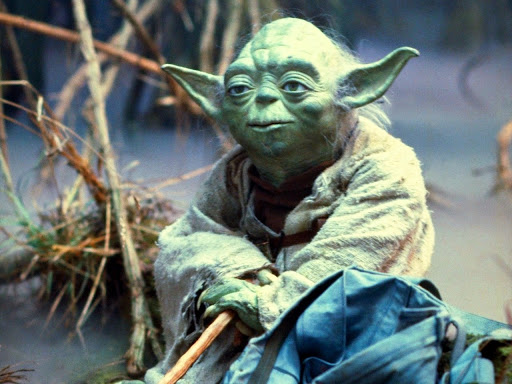
He came from Asia, where he became an authority in authentic Buddhism sometime in the distant past. He has no family to hold him down, so he’s come here to be your guru. He’ll sit in the zendo, cross-legged in his Oriental robes, and teach you in his accented English that “authenticity” resides in your heart, not in what you say or do. Sure, there’s a lot about the modern world he isn’t familiar with, but that’s fine because his sole purpose is to pass along the authority and authenticity of his teachings so that you can make Buddhism better, more modern and more relevant in a way that he frankly never could.
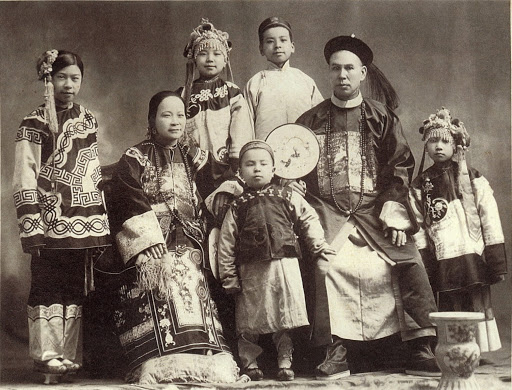
She came here from some war-torn Asian country and settled down in a nice little ethnic enclave with other people like her. Not only does she believe in gods and spirits, she prays to them daily to ensure that her kids get top-notch test scores. Oh, sure she may “speak” English, but only just barely. You pretty much already know what she thinks and believes about Buddhism—what you don’t know of what she thinks you can look up online or isn’t going to be real Buddhism anyway—so why bother to even ask? Just take some photos of her around the temple with your DSLR. You can sell those photos to Tricycle.
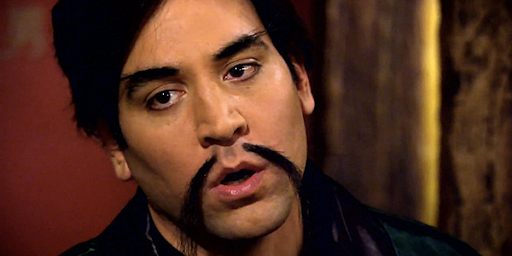
She’s basically a white person who happens to be Asian. She speaks English surprisingly well and barely a word of whatever Asian dialect her parents spoke. She cooks non-ethnic food, uses the dishwasher and crosses her chopsticks. She may have been raised by Superstitious Immigrant, but she’s renounced that backwards and foreign worldview. She probably doesn’t even identify as Asian. You can find her at yoga Thursdays and your zendo’s weekend sits, where she’ll sit quietly in the back and not make much of a fuss. It really doesn’t matter if she doesn’t speak up because whatever she says isn’t going to be any different from what the white Buddhists are saying.
Remember, I’m listing stereotypes, not describing Buddhist Asian Americans. These stereotypes’ salient characteristics are rooted in what has been said and written about us and are often taken as fact by those with limited exposure to the real diversity of Buddhist Asian Americans. After all, most of us are neither Oriental Monk, Superstitious Immigrant or Banana Buddhist—although some of the characteristics may pick at our insecurities. (I use the dishwasher.)
It’s important to be mindful of these stereotypes and how they shape our own perceptions. If you choose to think of us as Superstitious Immigrants, you will never accept us as real Americans. If you choose to think of us as Banana Buddhists, you then trivialize the value of our heritage. The best way to uproot these stereotypes is first to stop perpetuating them, to encourage others to stop perpetuating them, and then to actually start spending some more time getting to know Buddhist Asian Americans for who we really are.